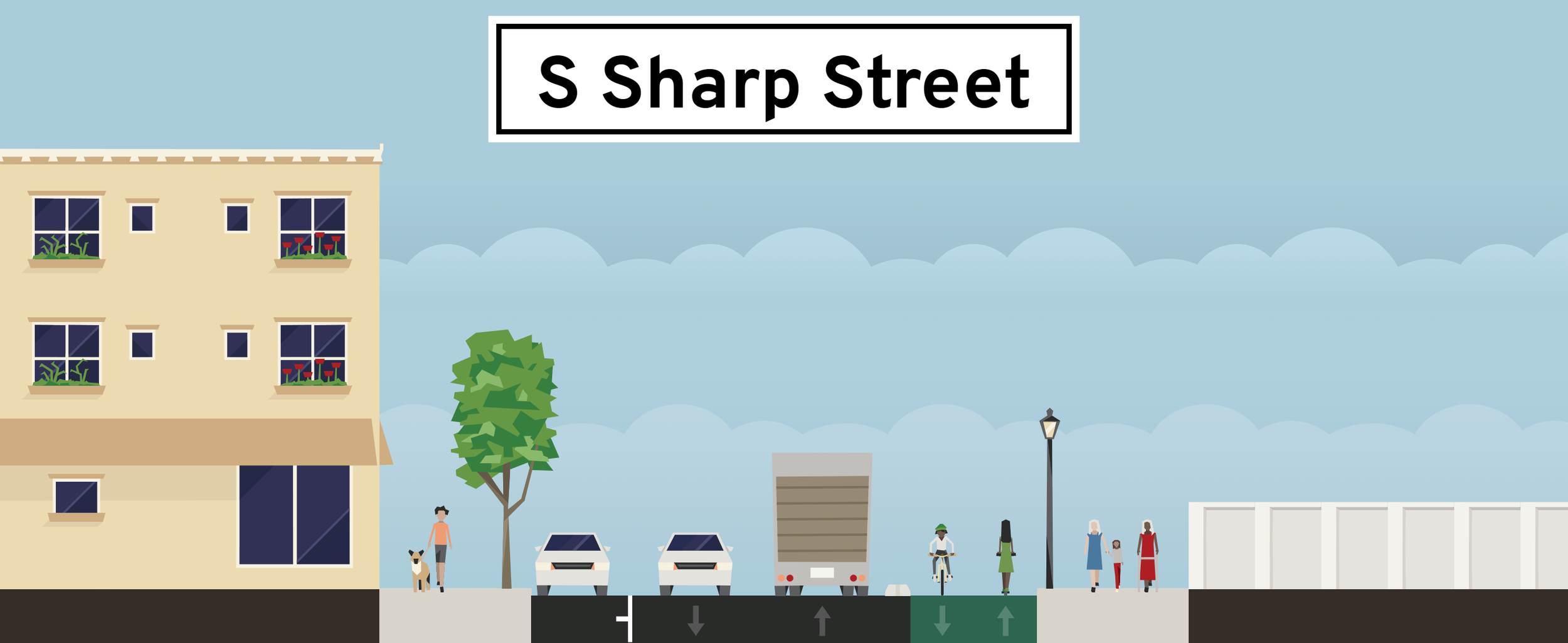Take action today by sending an email about this unacceptable design. Scroll down to read the full details.
Separated bike lane extension under the Convention Center
On June 8th, Baltimore City Department of Transportation presented plans for the Sharp Street Bikeway Rapid Enhancement Plan. Construction is funded through a Maryland Bikeways grant awarded in FY2022.
The project makes a connection from the end of the Maryland/Cathedral cycletrack through the Convention Center to Conway Street with a separated bike lane. This is a major improvement over current conditions, and should be celebrated.
After that, it becomes sharrows—just painted bike symbols—in the road.
Baltimore City has not followed its own codified guidance on the corridor, which can be seen on page 54 of the Baltimore Complete Streets Manual.
Proposed “sharrows” as the only treatment on Sharp Street south of Conway
The proposed design is sharrows with a yellow centerline. Baltimore City Complete Streets guidance only permits bicycle boulevards on two-way streets without a centerline, and treatments required for bicycle boulevard designs like speed cushions are not proposed for this project.
At minimum, traffic calming curb extensions and speed cushions must be installed along with bicycle wayfinding sharrows for this design to comply with city ordinance. Speed cushions can be designed to allow bike, truck, and emergency vehicle traffic to navigate normally while slowing down personal automobiles, as the latter have a narrower track width.
A fire engine demonstrating speed cushion spacing that allows trucks and bikes to avoid the cushions while slowing cars, as they have a narrower width tire-to-tire.
The best and safest option would be replacing parking on the west side of Sharp Street with a separated, two-way bike lane and concrete curb stops.
A separated bikeway would be the safest option for people of all ages and abilities.
Contrary to statements made at the meeting, parking utilization is low on this side of the street, as it fronts the Federal Reserve impacting no residences directly.
This design would realize the adopted Baltimore Green Network Plan goals for the corridor, which calls for it to be a "Community Corridor" with elements such as "bump-outs and traffic calming, improved sidewalks, protected bikeways or multi-user paths, and improved and new trail connections," by directly connecting the Maryland/Cathedral cycletrack to the East Coast Greenway, Baltimore Greenway Trails Network, and Reimagine Middle Branch at Solo Gibbs Park.
"Security Concerns" about having a separated bike lane along a Federal Reserve Branch are preposterous when that same space is currently occupied by car parking. Bikemore surveyed all Federal Reserve headquarters and branches, as well as US Mints, and found that a majority have dedicated bike infrastructure directly adjacent to their properties.
We encourage Baltimore City Department of Transportation to follow its own adopted guidance in designing bicycle infrastructure for all-ages and abilities, and rectify this substandard plan.





